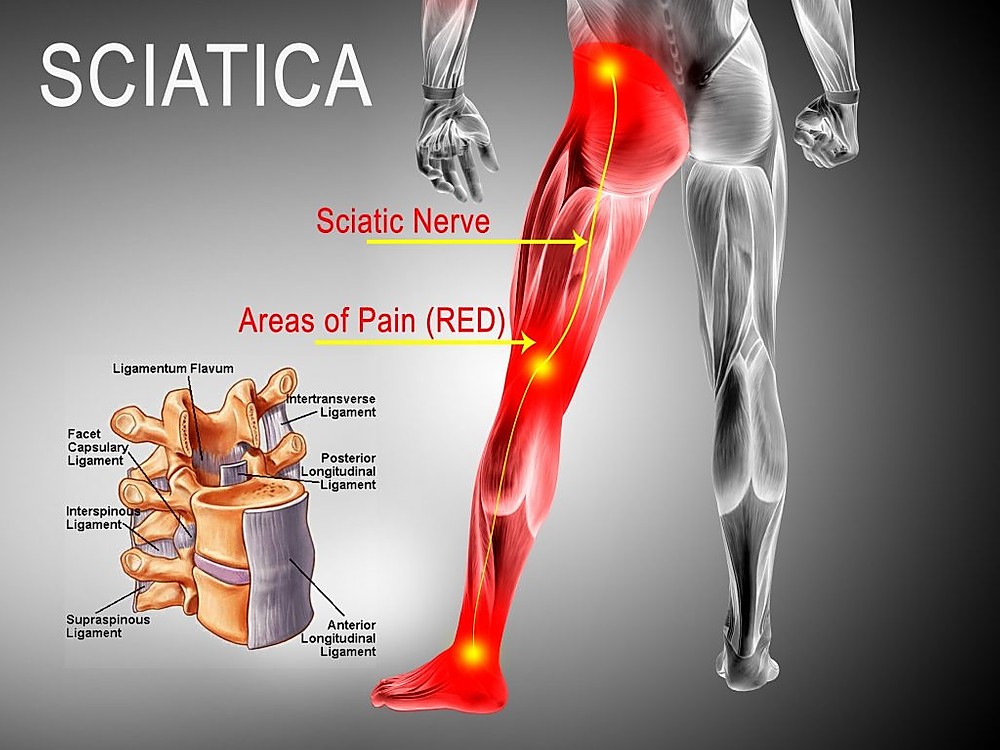What is it?
Sciatica is a compression of your sciatic nerve. This nerve comes from your lower back and follows through your buttock, past your hip, down your leg and all the way to your toes. Therefore sciatica can occur anywhere from your lower back to your foot. It is generally diagnosed around the lower back, buttock or hip area and refers pain down the leg.
What does it feel like?
Sciatic pain can feel like sharp shooting pain, like a knife, burning, searing, an electric shock or general ache to goes down your leg.
- Some people experience more local pain where others only feel the pain in their calf or side of the leg.
- Painful tasks include bending down to put socks or shoes on. As well as standing up from sitting, getting out of bed, getting in or out of the car, lifting or carrying things.
- You may have noticed tingling, pins and needles or numbness in your calf or foot.
- In general you find yourself protecting your back and moving slower because you are afraid that the pain might shoot.
What causes Sciatica?
The sciatic nerves starts in your spinal cord, comes out between 4 of your lower vertebrae, tracks deep through your pelvis and branches out into different nerves supplying the rest of your leg and foot. Sciatica is due to compression or squashing anywhere along the nerve. As a result, the nerve is inflamed and any extra pressure or stretch on the nerve causes pain. Lower back stiffness, tight gluteal muscles, an unstable pelvis, tight nerves or hamstrings or hip pathology can all be contributing factors to sciatic pain.
How is Sciatica diagnosed?
Your Physiotherapist or Doctor can diagnose Sciatica from your symptoms. A more specific diagnosis regarding the true cause of your sciatica will required a full physical assessment by a physiotherapist. It can normally will not need invasive tests or investigations. Further investigations such as x-rays or MRI scans may be required if your symptoms are severe. These will also be necessary if there is a chance the lumbar-vertebral discs in your back are causing your symptoms. You should discuss your symptoms thoroughly with your therapist so they can determine if this is necessary.
How can Back in Action Physiotherapy help?
At Back in Action we will talk to you and listen to how your pain is affecting your everyday activities. We will start with a thorough assessment of your movements, joints and nerves to determine the exact cause of your sciatic pain. Once we have diagnosed your injury we will use a combination of techniques. These will include as mobilisations, massage, stretching, acupuncture, taping, muscle energy techniques, and some basic home exercises to help you get better, faster. We can advise and educate you about your injury and set goals with you to achieve in and out of our sessions. Painkillers and Anti-inflammatories can help to relieve some pain and we recommend you see your local Pharmacist or Doctor regarding the best type for you.

